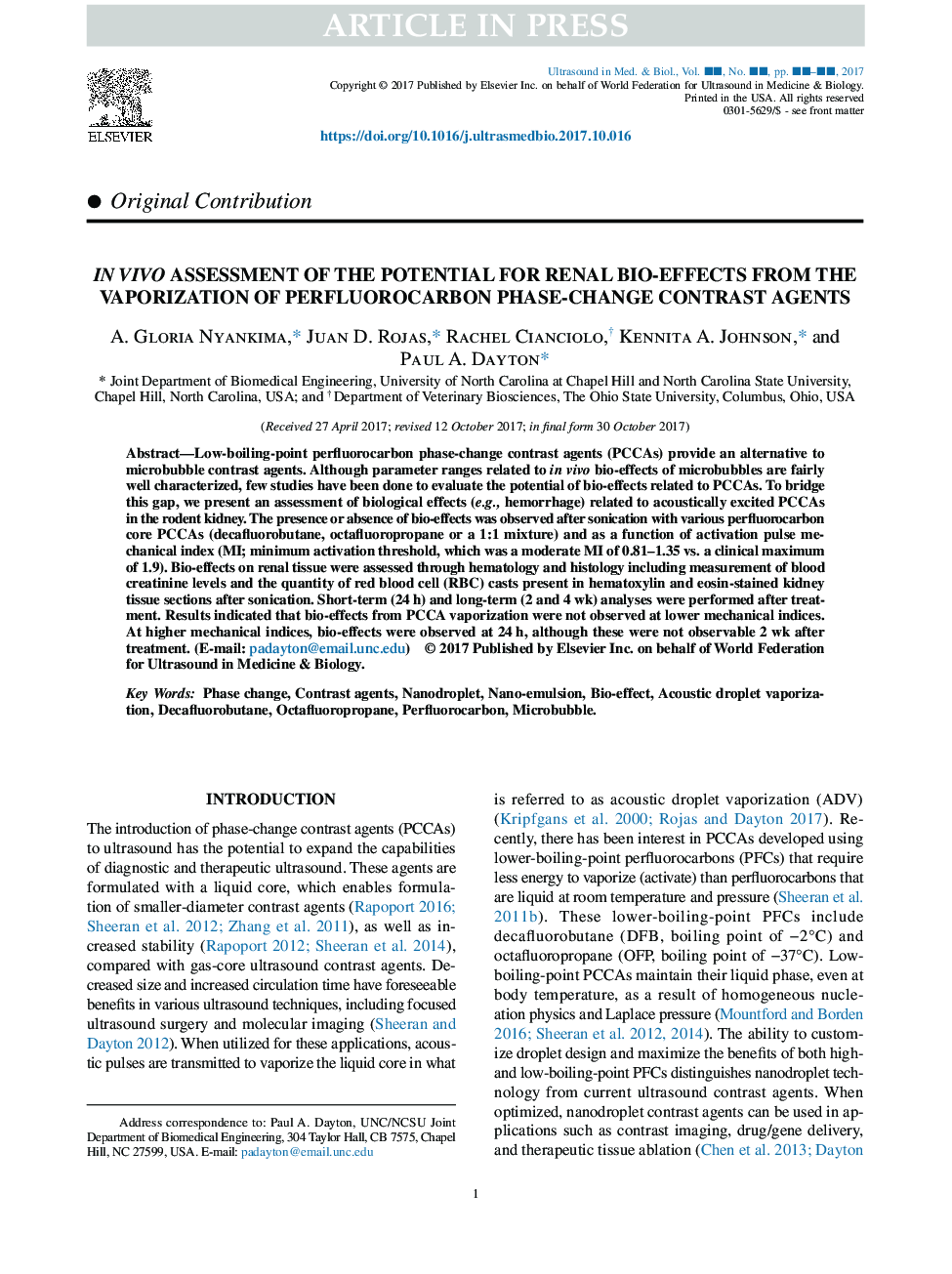| Article ID | Journal | Published Year | Pages | File Type |
|---|---|---|---|---|
| 8131366 | Ultrasound in Medicine & Biology | 2018 | 9 Pages |
Abstract
Low-boiling-point perfluorocarbon phase-change contrast agents (PCCAs) provide an alternative to microbubble contrast agents. Although parameter ranges related to in vivo bio-effects of microbubbles are fairly well characterized, few studies have been done to evaluate the potential of bio-effects related to PCCAs. To bridge this gap, we present an assessment of biological effects (e.g., hemorrhage) related to acoustically excited PCCAs in the rodent kidney. The presence or absence of bio-effects was observed after sonication with various perfluorocarbon core PCCAs (decafluorobutane, octafluoropropane or a 1:1 mixture) and as a function of activation pulse mechanical index (MI; minimum activation threshold, which was a moderate MI of 0.81-1.35 vs. a clinical maximum of 1.9). Bio-effects on renal tissue were assessed through hematology and histology including measurement of blood creatinine levels and the quantity of red blood cell (RBC) casts present in hematoxylin and eosin-stained kidney tissue sections after sonication. Short-term (24âh) and long-term (2 and 4âwk) analyses were performed after treatment. Results indicated that bio-effects from PCCA vaporization were not observed at lower mechanical indices. At higher mechanical indices, bio-effects were observed at 24âh, although these were not observable 2âwk after treatment.
Keywords
Related Topics
Physical Sciences and Engineering
Physics and Astronomy
Acoustics and Ultrasonics
Authors
A. Gloria Nyankima, Juan D. Rojas, Rachel Cianciolo, Kennita A. Johnson, Paul A. Dayton,
